BloostonLaw Telecom Update Published by the Law Offices of Blooston, Mordkofsky, Dickens, Duffy & Prendergast, LLP [Selected portions reproduced here with the firm's permission.] www.bloostonlaw.com | Vol. 11, No. 32 | September 10, 2008 |
FY 2008 Regulatory Fees Due Sept. 25 Fiscal Year (FY) 2008 regulatory fee payments must be made by 11:59 p.m. ET on September 25. Payments received after that time will be assessed a 25% late payment penalty. The Report and Order (R&O) on the Assessment and Collection of Regulatory Fees for FY 2008 retains the same formula, policies, and procedures for collecting regulatory fees that the Commission adopted in Fiscal Years 2007 and 2006, as well as in prior years. In conjunction with the R&O, the FCC adopted a Further Notice of Proposed Rulemaking (FNPRM) to examine ways to improve its methods for collecting regulatory fees (see story below). Phishing Warning: The FCC has received complaints that non-government entities may be using Internet sites to misdirect parties seeking to submit their regulatory fee payments. The complainants have alleged that these non-government websites are attempting to collect financial information. Because the allegations indicate potential fraudulent and illegal conduct, the Office of Managing Director has referred the matter to the Inspector General for further investigation. The FCC also urges regulatory fee payers to make any Internet payments directly through the Commission’s authorized Internet website. Payment may be submitted electronically at www.fcc.gov/feefiler. BloostonLaw contacts: Hal Mordkofsky, John Prendergast, and Richard Rubino. Red Flag Rules Affect Small Businesses, Private Users, As Well As Rural Telcos Program Must Be In Place By November 1 As we reported in July (BloostonLaw Telecom Update, July 23), the Federal Trade Commission (FTC) has established “Red Flag” Rules which are designed to prevent identity theft. Under the new rules, all businesses that maintain a creditor-debtor relationship with customers, including virtually all telecommunications carriers, must adopt written procedures designed to detect the relevant warning signs of identify theft, and implement an appropriate response. The Red Flag compliance program must be in place by November 1, 2008. However, the requirements are not just binding on telcos and wireless carriers that are serving the public on a common carrier basis. They also apply to any “creditor” (which includes entities that defer payment for goods or services) that has “covered accounts” (accounts used mostly for personal, family or household purposes). This also may affect private user clients who use radios internally, as well as many telecom carriers’ non-regulated affiliates and subsidiaries. If you have any question about whether the Red Flag Rules apply to you, please contact the firm. BloostonLaw has prepared a Red Flag Compliance Manual to help your company achieve compliance with the Red Flag Rules. The program must be managed by the Board of Directors or senior management employees of the company, and must provide appropriate training and oversight of the company’s staff. These measures are required in addition to those mandated by the FCC’s CPNI rules. The cost of the compliance manual is $400.00. Under the Red Flags Rules, you must develop a written program (i.e., manual) that identifies and detects the relevant warning signs – or “red flags” – of identity theft. These may include, for example, unusual account activity, fraud alerts on a consumer report, or attempted use of suspicious account application documents. The program must also describe appropriate responses that would prevent and mitigate the crime and detail a plan to update the program. The program must be managed by the Board of Directors or senior employees of the financial institution or creditor, include appropriate staff training, and provide for oversight of any service providers. The Red Flags Rules provide all financial institutions and creditors the opportunity to design and implement a program that is appropriate to their size and complexity, as well as the nature of their operations. Guidelines issued by the FTC, the federal banking agencies, and the National Credit Union Administration (NCUA) should be helpful in assisting covered entities in designing their programs. A supplement to the Guidelines identifies 26 possible red flags. These red flags are not a checklist, but rather, are examples that financial institutions and creditors may want to use as a starting point. They fall into five categories: - alerts, notifications, or warnings from a consumer reporting agency;
- suspicious documents;
- suspicious personally identifying information, such as a suspicious address;
- unusual use of – or suspicious activity relating to – a covered account; and
- notices from customers, victims of identity theft, law enforcement authorities, or other businesses about possible identity theft in connection with covered accounts.
As noted above, BloostonLaw has developed a Compliance Manual for the Red Flag Rules. Please contact Gerry Duffy and Mary Sisak with any questions or to request the manual. FCC Adopts Rulemaking To Implement NET 911 Act The FCC has adopted a Notice of Proposed Rulemaking (NPRM) to implement the New and Emerging Technologies 911 Improvement Act of 2008 (NET 911 Act), which was signed into law on July 23, 2008. The legislation is designed to “promote and enhance public safety by facilitating the rapid deployment of Internet Protocol (IP)- enabled 911 and E911 services, encourage the Nation’s transition to a national IP-enabled emergency network, and improve 911 and enhanced 911 (E911) access to those with disabilities.” Comments in this WC Docket No. 08-171 proceeding can be submitted through September 17, and there are opportunities for ex parte presentations thereafter. The NET 911 Act addresses several aspects of the nation’s 911 system. The NPRM focuses on one particular obligation in the NET 911 Act: The Commission must, no later than October 21, 2008, issue regulations implementing certain key provisions that, among other things, ensure that providers of IP-enabled voice services have access to the capabilities they need to provide 911 and E911 service. The NET 911 Act explicitly imposes on each IP-enabled voice service provider the obligation to provide 911 service and E911 service in accordance with Commission requirements. The NET 911 Act also grants each IP-enabled voice service provider rights with respect to “capabilities” to provide 911 and E911 services. For example, an IP-enabled voice service provider that seeks capabilities to provide 911 and enhanced 911 service from an entity with ownership or control over such capabilities, shall have a right of access to such capabilities, including interconnection, on the same rates, terms, and conditions that are provided to a provider of commercial mobile service (CMS), subject to certain conditions. Those conditions will include the Commission issuing regulations within 90 days after the date of enactment of the NET 911 Act. And, in general, those regulations shall: (A) ensure that IP-enabled voice service providers have the ability to exercise their rights; (B) take into account any technical, network security, or information privacy requirements that are specific to IP-enabled voice services; and (C) provide, with respect to any capabilities that are not required to be made available to a commercial mobile service provider but that the Commission determines are necessary for an IP-enabled voice service provider to comply with its obligations. In the NPRM, the FCC seeks comment on the specific duties imposed by the legislation and the elements of the regulations it is required to adopt. The FCC asks about the capabilities for which the NET 911 Act affords IP enabled voice service providers a right of access, how the Commission can ensure that IP-enabled voice service providers can exercise these rights, and how to provide that such capabilities are made available on the same rates, terms, and conditions that are provided to commercial mobile service providers. The NET 911 Act states that IP-enabled voice service providers “shall . . . have a right of access to such capabilities, including interconnection, to provide 9–1–1 and enhanced 9–1–1 service on the same rates, terms, and conditions that are provided to CMS providers.” To what extent is it appropriate for the Commission to define “capabilities” in this rulemaking, or should it determine what constitutes “capabilities” on a case-by-case basis? To the extent a prospective determination is appropriate, the FCC seeks comment on the definition of “capabilities.” What would such a definition include and exclude? Are pseudo Automatic Number Identification (p-ANI), realtime Automatic Location Identification (ALI) database access, Emergency Service Numbers (ESN), Master Street Address Guides (MSAG), shell records, callback number, selective router interconnection for both voice and data transport, or other “elements” appropriately considered “capabilities” under the NET 911 Act? Do “capabilities” include network services, testing, and agreements? What other items, elements, features, functions, or agreements are appropriately considered capabilities? Because the NET 911 Act requires IP-enabled service providers to “have a right of access” to capabilities to provide 911 and enhanced 911 service “on the same rates, terms, and conditions that are provided to a provider of commercial mobile service,” the FCC seeks comment about what capabilities are currently required to be available to CMS providers. What, if any, capabilities “are necessary for an IP-enabled voice service provider to comply with its obligations” under section 6(a) of the Wireless 911 Act, but “are not required to be made available to a commercial mobile service provider”? With regard to mobile VoIP service used by CMS carriers in conjunction with their CMS service, the FCC seeks comment specifically on what capabilities “are necessary for [such mobile interconnected VoIP] provider to comply with its obligations” under section 6(a) of the Wireless 911 Act. Specifically, what requirements should be imposed on the mobile VoIP provider and its roaming partner when offering mobile VoIP service in a roaming area outside its CMS footprint? For example, T-Mobile has asked the Commission to waive or rule on several requirements of the VoIP 911 Order for its interconnected VoIP service, which allows a customer to use a dual-mode handset that works as a regular CMS phone and, when it is in a WiFi hotspot, an interconnected VoIP phone. Their service uses CMS default routing for VoIP 911 calls and “last known cell” information for automatic location information in their footprint, but is not able to use such “last known cell” information outside the footprint because it is not provided by its roaming partner. Assuming that T-Mobile’s use of CMS default routing and associated “last known cell” information is sufficient, the FCC seeks comment on what modifications it should make when outside the footprint. For example, what requirements should be placed on the roaming partners of these dual-mode service providers to provide access to information necessary to employ “last known cell” in a roaming area in the same manner that dual-mode providers such as T-Mobile use such information when in their own network? Further, the FCC seeks comment generally on what capabilities it should require roaming partners to make available to mobile VoIP providers to ensure compliance with applicable 911 and E911 requirements. In addition, the FCC seeks comment on whether wireless carriers should be required pursuant to the NET 911 Act to provide roaming partners with last-known caller location information necessary for the proper routing of wireless VoIP calls to 911. The FCC also seeks comment on how such a requirement would affect incentives to reach roaming agreements and how the Commission can ensure that such a requirement would not prevent companies from forming roaming agreements they might otherwise reach. Who owns and controls each of the capabilities identified in response to the questions above? For each type of entity owning or controlling such capabilities, how should the Commission fulfill its statutory mandate to “ensure that IP-enabled voice service providers have the ability to exercise their rights under subsection (b)”? Does this mandate confer sufficient authority or jurisdiction upon the Commission to impose requirements on state, local or private entities? What other sources of authority or jurisdiction are available to the Commission to ensure that such capabilities are made available? Are there any additional actions the Commission should take to ensure that such capabilities are available per Congress’s instructions? What are the implications of Congress’s direction that IP-enabled voice service providers shall have a right of access to these capabilities “for the exclusive purpose of complying with” their obligations under the NET 911 Act? The NET 911 Act requires that IP-enabled voice service providers receive a right of access to E911 network capabilities on the “same rates, terms, and conditions” as provided to CMS providers. Under what rates, terms, and conditions are such capabilities provided to CMS providers? To what extent are capabilities made available to CMS providers under tariff, interconnection agreement, or some other form of agreement? To what extent are the terms of such agreements available for review by other CMS providers or providers of IP-enabled voice service? Assuming that similar capabilities have varying rates, terms, and conditions, how should the Commission determine what rates, terms, and conditions are to be placed on certain capabilities? Is it enough to mandate in our rules that those entities owning or controlling the capabilities needed for IP-enabled voice service providers provide such capabilities at the same rates, terms and conditions offered to CMS providers? Conversely, is it necessary to establish pricing standards for each of the capabilities that an IP-enabled voice service provider needs to meet the NET 911 Act’s section 101(2) obligations? If so, what standards should apply? Can and should the Commission mandate disclosure of all rates, terms, and conditions concerning each capability from states, localities, and industry? How shall the Commission determine what rates, terms, and conditions would have been made available to CMS providers for capabilities that they do not use? Are there any other differences between CMS and IP-enabled voice service that the FCC should consider with regard to the “rates, terms, and conditions” of access for IP-enabled voice service providers? What technical, network security, or information privacy requirements specific to IP-enabled voice services must be taken into account when ensuring that capabilities are available to IP-enabled voice service providers? Are there any concerns that certain 911 systems may not offer the capabilities necessary particularly to meet the technical requirements of IP-enable voice services? If so, how should the FCC take into account these requirements when adopting regulations for IP-enabled voice service providers? What network security issues do providers of IP-enabled voice services pose for the 911 and E911 networks? What steps can the Commission take to correct or ameliorate these concerns? With respect to information privacy, are there any issues specific to IP-enabled voice service providers that raise new concerns regarding the protection of customer proprietary network information? What steps should the Commission take to ensure IP-enabled voice service providers’ customers’ information is protected during and after a 911 or E911 call? Should the Commission take any action at this time to require IP-enabled voice service providers to register with the Commission and to establish a point of contact for public safety and government officials relative to 911 and E911 service and access? If so, what steps would be appropriate? Finally, what other issues relating to the NET 911 Act should the Commission consider? Are there particular issues relating to the Commission’s jurisdiction, federal, state, local and private initiatives, or other issues that the Commission should take into consideration when adopting rules? Should the Commission delegate authority to enforce any regulations issued under subsection (c) to State commissions or other State or local agencies or programs with jurisdiction over emergency communications? If so, what specifically should the Commission delegate and to which entity? What costs and burdens would rules resulting from the Notice impose upon small entities and how can they be ameliorated? Are there any other issues or significant alternatives that the Commission should consider to ease the burden on small entities? BloostonLaw contacts: Hal Mordkofsky, Ben Dickens, Gerry Duffy, and John Prendergast. CTIA Seeks Clarification Of State & Local Review Of Wireless Facility Siting Apps The FCC has asked for comments on CTIA--The Wireless Association’s request for a Declaratory Ruling clarifying provisions of the Communications Act, regarding state and local review of wireless facility siting applications. CTIA seeks clarification of provisions in section 332(c)(7) of the Communications Act that it contends are ambiguous and that it claims have been interpreted in a manner that has allowed certain zoning authorities to impose unreasonable impediments to wireless facility siting and the provision of wireless services. CTIA also requests that the Commission preempt local ordinances and state laws that it states subject wireless facility siting applications to unique, burdensome requirements, in violation of section 253(a) of the Communications Act, which bars state and local laws that “prohibit or have the effect of prohibiting the ability of any entity to provide any interstate or intrastate telecommunications service.'' Specifically, CTIA asks the Commission to take four actions relating to the time frames in which zoning authorities must act on siting requests, their power to restrict competitive entry by multiple providers in a given area, and their ability to impose certain procedural requirements on wireless service providers. First, to eliminate an ambiguity that CTIA contends currently exists in section 332(c)(7)(B)(v) of the Communications Act, CTIA asks the Commission to clarify the time period in which a state or local zoning authority will be deemed to have failed to act on a wireless facility siting application. CTIA states that “the Commission should issue a declaratory ruling explaining that (1) a failure to act on a wireless facility siting application only involving collocation occurs if there is no final action within 45 days from submission of the request to the local zoning authority; and (2) a failure to act on any other wireless siting facility application occurs if there is no final action within 75 days from submission of the request to the local zoning authority.'' Second, citing the requirement in section 332(c)(7)(B)(ii) of the Communications Act that state and local governments act on wireless facility siting applications within a reasonable time, CTIA asks the Commission to implement procedural steps whereby, if a zoning authority fails to act within the above time frames, the application shall be “deemed granted.'' Alternatively, CTIA asks the Commission to establish a presumption that entitles an applicant to a court-ordered injunction granting the application unless the zoning authority can justify the delay. Third, CTIA asks the Commission to clarify that section 332(c)(7)(B)(i)(II), which forbids state and local decisions that “prohibit or have the effect of prohibiting the provision of personal wireless services,'' bars zoning decisions that have the effect of preventing a specific provider from providing service to a location on the basis of another provider's presence there. Finally, CTIA requests that the Commission preempt, under section 253 of the Communications Act, local ordinances and state laws that automatically require a wireless service provider to obtain a variance before siting facilities. Comments in this WT Docket No. 08-165 proceeding are due September 15, and replies are due September 30. BloostonLaw contacts: Hal Mordkofsky, John Prendergast, and Richard Rubino. FCC Launches Review Of Regulatory Fee Process The FCC has issued a Further Notice of Proposed Rulemaking (FNPRM) regarding ways to improve its regulatory fee process. In light of the industry changes since 1994, the FCC asks how it can better determine the regulatory fees for services in a way that is aligned with the Commission's regulatory activities? It seeks comment on whether it should continue to collect regulatory fees based on the allocations for FY 2008, or if it should revert to a percentage allocation closer to its FY 1995 regulatory fee allocation, or if it should adopt a different allocation based on the communications marketplace that exists today. The FCC also seeks comment on possible methodologies for re-calculating the regulatory fee allocation. Commenters should discuss the fee categories that bear a too heavy regulatory fee burden. For example, some services, such as paging and private land mobile radio services (PLMRS), have declining subscriber bases. Conversely, the FCC seeks comment on whether there are categories that should pay higher regulatory fees. In addition, are there categories that should be added, deleted, or reclassified? Would such changes result in a system that is more (or less) equitable and reasonable? The FCC also seeks comment on whether it should review the entire regulatory fee process, apart from the annual regulatory fee orders, on a periodic basis. Should the Commission undertake a comprehensive analysis of its resource allocations as it did in 1994? Should the Commission allocate regulatory fees to each category based on the proportionate use of full time equivalent (FTE') within the Commission? It seeks comment on whether it should examine FTE allocation by industry segment or some other basis, such as strategic goal. Currently, the Commission uses different bases to allocate regulatory fees to entities in different regulatory fee categories. For example, fees for wireless companies are based on subscribers and wireline companies are based on revenues. Should the Commission move to harmonize these bases? Would it be more equitable to allocate fees on a single basis across all regulatory fee categories? Commenters should address the incentives or disincentives of using a particular basis for allocation. For example, do wireless companies have less incentive to sign up subscribers because each new subscriber will increase their regulatory fees? The FCC notes there are various services or entities that may not be paying their share of regulatory fees. Including more services would lessen the regulatory fee burden on the remaining regulates. The FCC seeks comment on whether, and if so how, to include additional services. Increasing compliance with its rules also would lessen the regulatory fee burden on the remaining regulatees. The FCC seeks comment on ways to improve compliance with our rules. In addition, the FCC seeks comment on whether it should adopt additional oversight measures, such as an audit regime to ascertain that payments are in accordance with its rules. The FCC seeks comment on whether it should modify its administration of regulatory fees, such as its collection processes, as well as the forms that it uses for regulatory fee payers. The FCC seeks comment on whether it should modify its Form 159. Should the FCC use a different procedure for billing and pre-billing? Should the FCC’s regulatory fee procedures be combined with other filing and reporting requirements? The FCC seeks comment on whether it should adopt additional performance metrics or measurements pertaining to regulatory fees. Commenters should discuss whether it should adopt additional performance measurements and publish this information regarding, for example, timeliness of payment. The FCC also seeks comment on whether there are certain categories of licensees who should qualify for reduced regulatory fees or be exempt entirely. The FCC also invites comment on several specific regulatory fee issues relating to Interstate Telecommunications Service Providers (“ITSPs''); a recommendation that the Commission extend the process by which it added interconnected Voice over Internet Protocol (“VoIP'') providers to the ITSP category and also include wireless providers in the ITSP category; whether service providers other than cable operators, such as incumbent local exchange carriers (ILEC) providing video service, should also pay regulatory fees on a per-subscriber basis or otherwise; whether regulatory fees should be assessed on other services such as Wi-Fi; and other issues. Comments in this MD Docket No. 08-65 proceeding are due September 25, and replies are due October 27. BloostonLaw contacts: Hal Mordkofsky, John Prendergast, Richard Rubino, and Bob Jackson. FCC REPORTEDLY HAS NEW PLAN FOR D-BLOCK: According to various press reports, including Fierce-Broadband Wireless, the FCC last Friday, divulged a new proposal to re-auction D-block spectrum that failed to find a bidder during the 700 MHz auction held earlier this year. The new proposal reportedly will be discussed at the Commission's September 25 open meeting. During a conference call with reporters on Friday, FCC Chairman Kevin Martin said the new plan will require a lower reserve price and ease the construction requirements that contributed to the failure of the original auction. The new auction will call for a reserve price of $750 million (roughly half of the $1.3 billion required the first time around) and it extends the construction period from 10 to 15 years. If no bidder comes forth for the entire block, companies will be able to bid on 58 separate regional licenses. The commission has considered and has developed approaches for allocating costs to various regions in the event a regional approach is used, according to the press reports. It will not license spectrum on a regional basis unless at least 50 percent of the regional licenses are won. BloostonLaw contacts: Hal Mordkofsky, John Prendergast, Cary Mitchell, and Bob Jackson. SUMMIT ON PANDEMIC PREPAREDNESS CHANGED TO SEPTEMBER 18: The FCC has changed the date for its Summit on Pandemic Preparedness: Enhancing Communications Response for Health Care and First Responders, to Thursday, September 18, 2008, 9:00 a.m. – 1:15 p.m., in the Commission Meeting Room (TWC305). The Commission had previously scheduled the Summit for September 16. The Summit will focus on communications and coordination between the health care sector, first responders, government and the communications industry in preparation for a pandemic. The panel discussions will also highlight ways that communications may be expanded and enhanced in response to a pandemic and how the communications industry will serve an instrumental role in such a response. The Summit will be open to the public; admittance however will be limited to the seating available. Those individuals who are interested in attending the summit may pre-register on-line at: http://www.fcc.gov/pshs/summits. Audio/Video coverage of the meeting will be broadcast live with open captioning over the Internet from the FCC's web page at www.fcc.gov/realaudio. The FCC’s web cast is free to the public and does not require pre-registration. FCC EASES CERTAIN ARMIS REPORTING REQUIREMENTS, SEEKS COMMENT ON OTHERS: In an Order and Notice of Proposed Rulemaking (NPRM), the FCC has granted significant forbearance from carriers’ obligation to file Automated Reporting Management Information System (ARMIS) Reports 43-05, 43-06, 43-07, and 43-08 (i.e., the “ARMIS service quality and infrastructure reports”). In particular, with certain limited exceptions, the FCC found that the Communications Act Section 10 criteria are met for the ARMIS service quality and infrastructure reports, subject to certain conditions. Therefore, it granted certain conditional forbearance with respect to all carriers currently subject to those reporting requirements. The agency also recognized, however, that the Commission has continually sought to ensure that it has access to the data necessary for its public safety and broadband policymaking, and that certain infrastructure and operating data might be useful, but only if collected on an industry-wide basis. In the accompanying NPRM, the Commission therefore seeks comment on whether such data should be collected from all relevant providers in furtherance of those goals. In addition, certain service quality and customer satisfaction data might be useful, but only if collected on an industry-wide basis. Therefore, the FCC seeks comment on whether the Commission should collect such data on an industry-wide basis. Finally, it extends to Verizon and Qwest the conditional forbearance granted to AT&T in the AT&T Cost Assignment Forbearance Order. Scope of Information Collected. First, the FCC seeks comment on what information the Commission should collect on an industry-wide basis. Specifically, the Commission denied forbearance with respect to certain ARMIS Report 43-08 information. In addition, the Commission conditioned its grant of forbearance for ARMIS Report 43-07 and 43-08 on the reporting carriers maintaining their data for twenty four months from the effective date of this order. The FCC tentatively concludes that collection of information of this type would be useful to the Commission’s public safety and broadband policymaking, and seeks comment on the specific information that we should collect. The FCC seeks comment on this tentative conclusion. It finds, moreover, that these data would be useful only if they are collected from the entire relevant industry. Therefore, any such data collection would gather this information from all facilities-based providers of broadband and/or telecommunications. The FCC also recognizes the possibility that service quality and customer satisfaction data contained in ARMIS Reports 43-05 and 43-06 might be useful to consumers to help them make informed choices in a competitive market, but only if available from the entire relevant industry. The FCC thus tentatively conclude that it should collect this type of information, and seek comment on the specific information that we should collect. The FCC seeks comment on this tentative conclusion. Again, the FCC finds that these data would be useful only if they are collected from the entire relevant industry. Thus, any such data collection would gather this information from all facilities-based providers of broadband and/or telecommunications. Mechanism for Collecting Information. To the extent that the Commission collects any of the types of information described above, we also seek comment on the appropriate mechanism for such data collection. The FCC tentatively concludes that it should collect the infrastructure and operating data through Form 477, and seek comment on that tentative conclusion. In addition, it notes that while ARMIS information generally has been publicly available, carrier-specific Form 477 data is treated as confidential. What confidentiality protections, if any, are appropriate for the information here? To the extent that commenters support Commission collection of service quality and customer satisfaction data, we also seek comment on the appropriate mechanisms for such collections. Finally, the FCC seeks comment on possible methods for reporting information, as well as suggestions of methods to maintain and report the information, that achieve the purposes of the information collection while minimizing the burden on reporting entities, including small entities. Comments in this WC Docket No. 08-190 proceeding will be due 30 days after publication of the NPRM in the Federal Register, and replies will be due 30 days thereafter. BloostonLaw contacts: Ben Dickens, Gerry Duffy, and Mary Sisak. FCC LAUNCHES 2008 BIENNIAL REGULATORY REVIEW: The FCC has issued a Public Notice stating it is in the process of conducting its comprehensive 2008 biennial review of telecommunications regulations. The Commission is required (1) to review biennially its regulations “that apply to the operations or activities of any provider of telecommunications service,” and (2) to “determine whether any such regulation is no longer necessary in the public interest as the result of meaningful economic competition between providers of such service.” The Commission is directed to repeal or modify any such regulations that it finds are no longer in the public interest. As a result, the FCC seeks suggestions from the public as to what rules should be modified or repealed as part of the 2008 biennial review. Submissions should identify with as much specificity as possible the rule or rules that should be modified or repealed, and explain why and how the rule or rules should be modified or repealed. Parties should discuss how their suggested rule changes satisfy the standard of Section 11 of the Communications Act as interpreted by the D.C. Circuit Court in Cellco Partnership. As with previous biennial reviews, the agency expects that FCC staff will prepare reports recommending which sections of the rules should be modified or repealed. Please contact the firm for a list of the rules under review. Comments in these CG Docket No. 08-177, EB Docket No. 08-178, IB Docket No. 08-179, ET Docket No. 08-180, PS Docket No. 08-181, WT Docket No. 08-182, and WC Docket No. 08-183 proceedings are due October 6, and replies are due October 27. BloostonLaw contacts: Hal Mordkofsky, Ben Dickens, Gerry Duffy, and John Prendergast. FCC Meetings and Deadlines Sept. 15 – Deadline for comments on CTIA request for declaratory ruling clarifying provisions of Communications Act regarding state and local review of wireless facility siting applications (WT Docket No. 08-165). Sept. 15 – Deadline for comments on FNPRM regarding Commercial Mobile Alert System non-commercial educational (NCE) and public broadcast television station issues (PS Docket No. 07-287). Sept. 17 – Deadline for reply comments on NPRM to implement NET 911 Act (WC Docket 08-171). Sept. 17 – Deadline for comments on Consumer Groups’ petition for reconsideration of FCC’s Section 706 Report (GN Docket No. 07-45). Sept. 18 – Summit on Pandemic Preparedness. Sept. 18 – Deadline for comments on NPRM regarding whether certain services should be designated as eligible for funding under the E-rate program (CC Docket 02-6). Sept. 22 – Deadline for comments on FNPRM on EBS spectrum in Gulf of Mexico (WT Docket Nos. 03-66, 67). Sept. 24 – Deadline for reply comments on Consumer Groups’ petition for reconsideration of FCC’s Section 706 Report (GN Docket No. 07-45). Sept. 25 – FY 2008 Regulatory Fees are due. Sept. 25 – Deadline for comments on FNPRM regarding ways to improve regulatory fee process (MD Docket No. 08-65). Sept. 25 – FCC open meeting. Sept. 29 – Deadline for reply comments on FNPRM regarding Commercial Mobile Alert System non-commercial educational (NCE) and public broadcast television station issues (PS Docket No. 07-287). Sept. 30 – FCC Form 507, Universal Service Quarterly Line Count Update, is due. Sept. 30 – FCC Form 525, Competitive Carrier Line Count Quarterly Report, is due. Sept. 30 – Deadline for reply comments on CTIA request for declaratory ruling clarifying provisions of Communications Act regarding state and local review of wireless facility siting applications (WT Docket No. 08-165). Oct. 1 – State Certification of Universal Service Support is due. Oct. 1 – Local Switching Support forms are due. Oct. 3 – Deadline for comments on NPRM tentatively concluding that FCC should clarify that low power auxiliary stations within the 700 MHz band should not be permitted at the end of the DTV transition (WT Docket Nos. 08-166, 167). Oct. 3 – Deadline for reply comments on NPRM regarding whether certain services should be designated as eligible for funding under the E-rate program (CC Docket 02-6). |













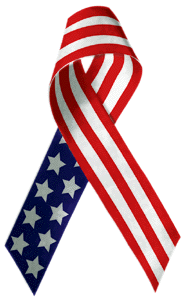 Never Forget 9-11-01
Never Forget 9-11-01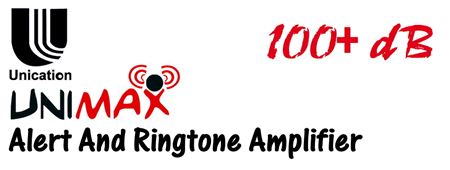

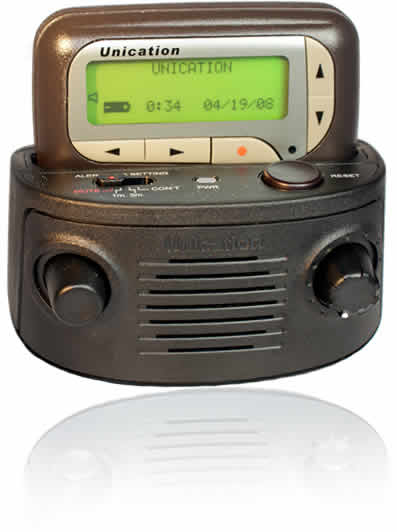

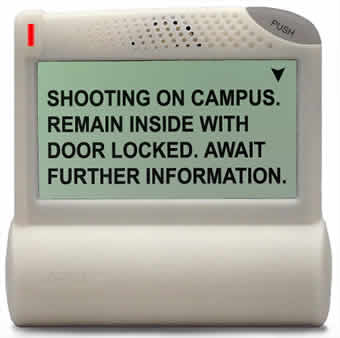

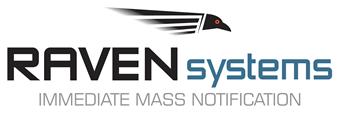

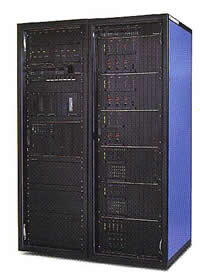

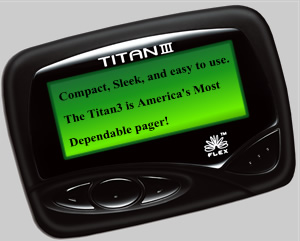
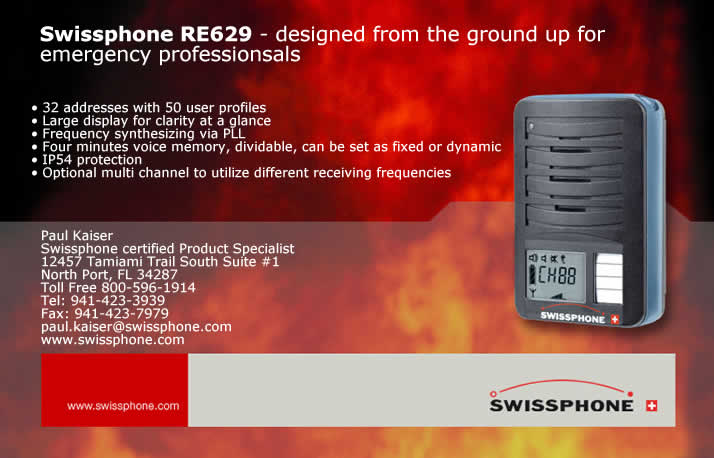
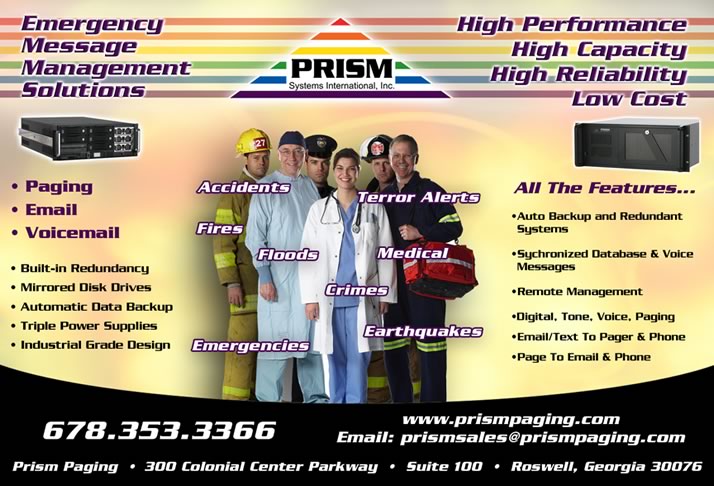


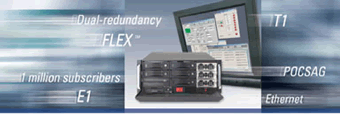

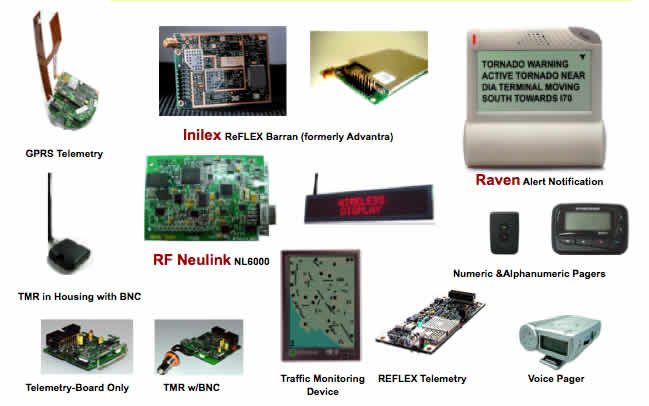

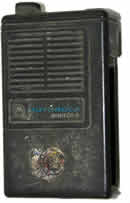
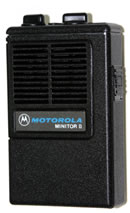



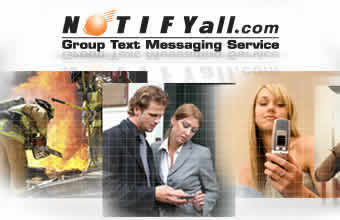























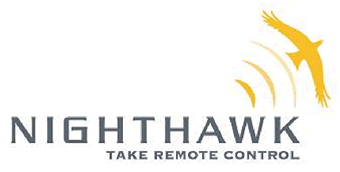






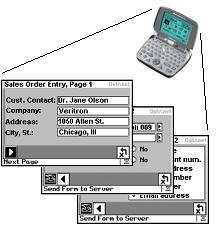 If you see someone in the field (like salespeople, technicians, and delivery people) using paper forms, their company could probably save a pile of money, and get much better timeliness, accuracy and efficiency, by using converting to Outr.Net's Wireless Forms. Custom applications for as little as $995, delivered in just a few days.Outr.Net has a web page on Wireless Forms for Timeports at:
If you see someone in the field (like salespeople, technicians, and delivery people) using paper forms, their company could probably save a pile of money, and get much better timeliness, accuracy and efficiency, by using converting to Outr.Net's Wireless Forms. Custom applications for as little as $995, delivered in just a few days.Outr.Net has a web page on Wireless Forms for Timeports at: 



